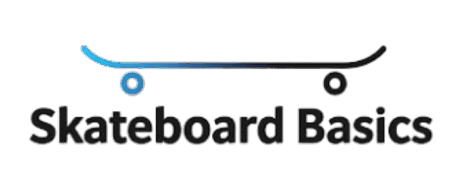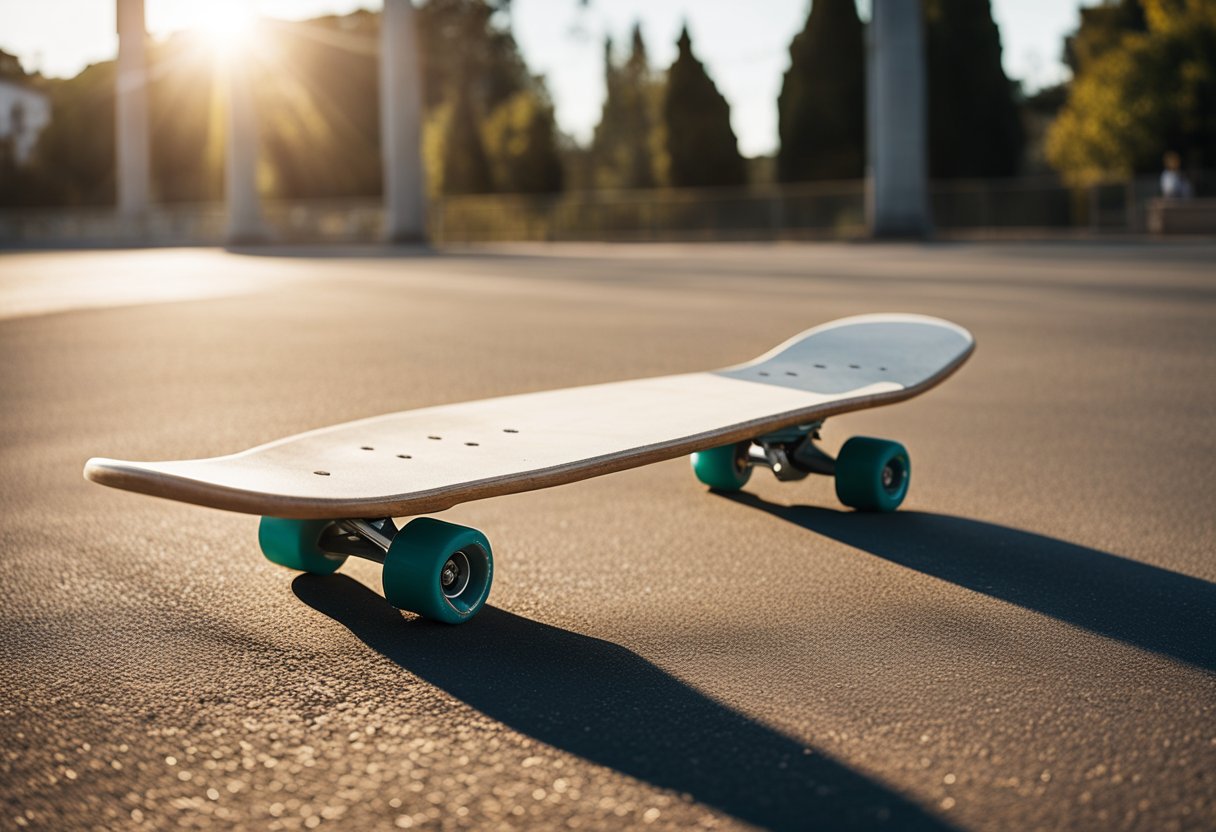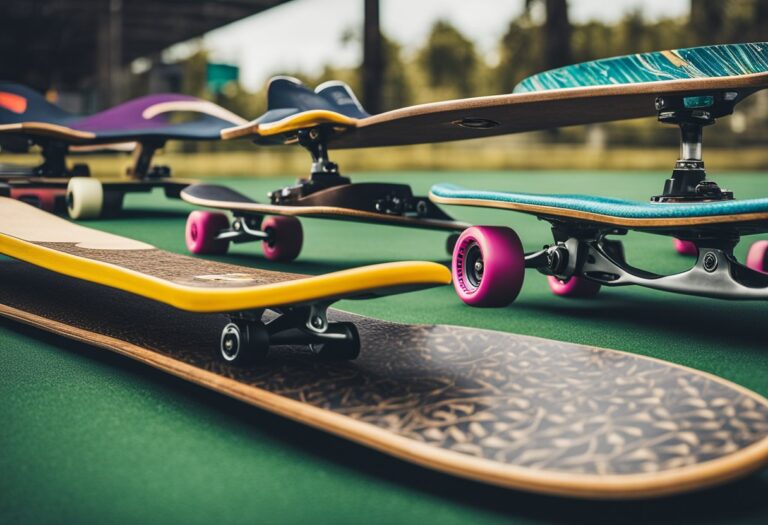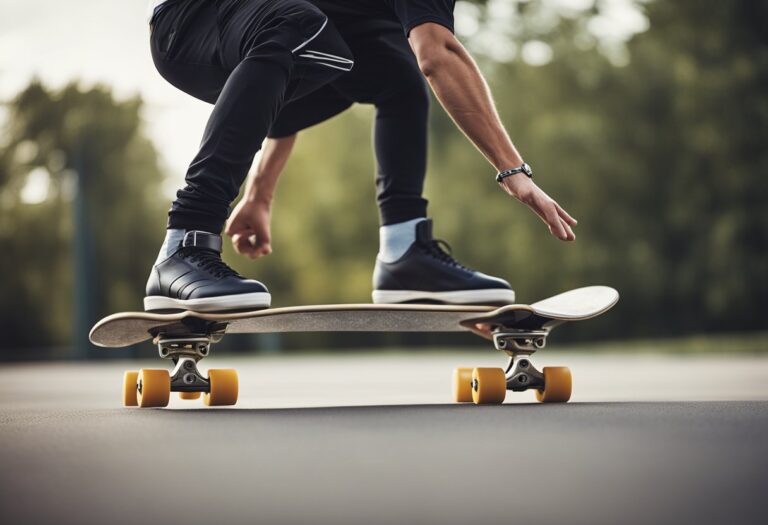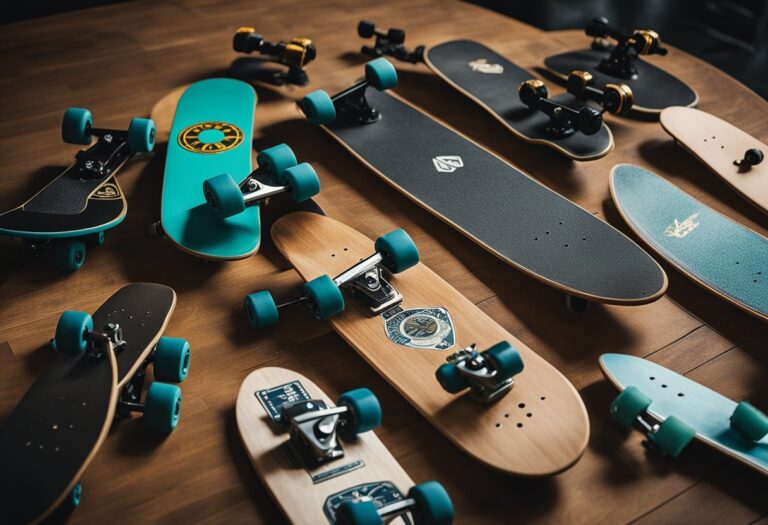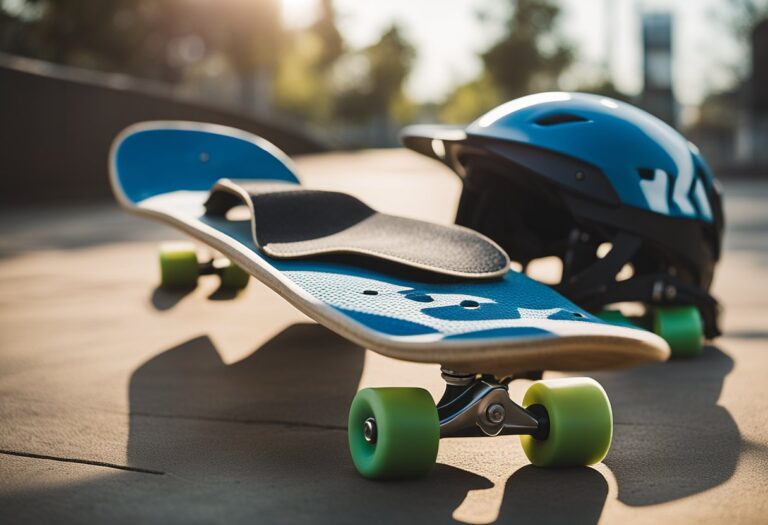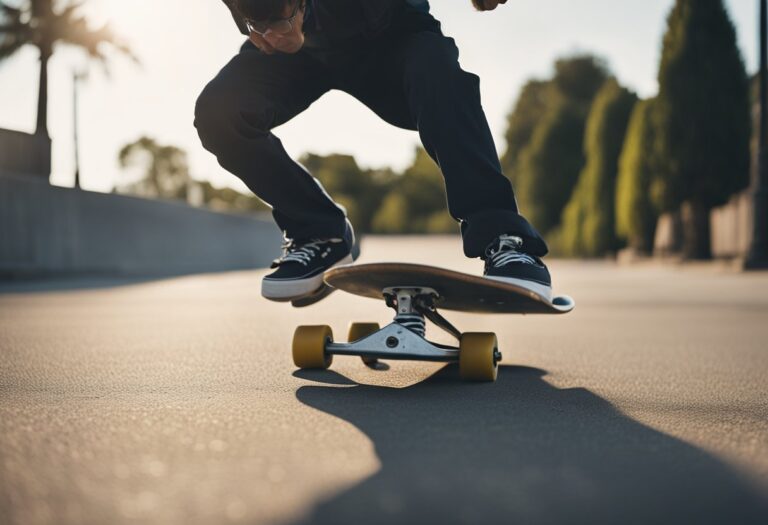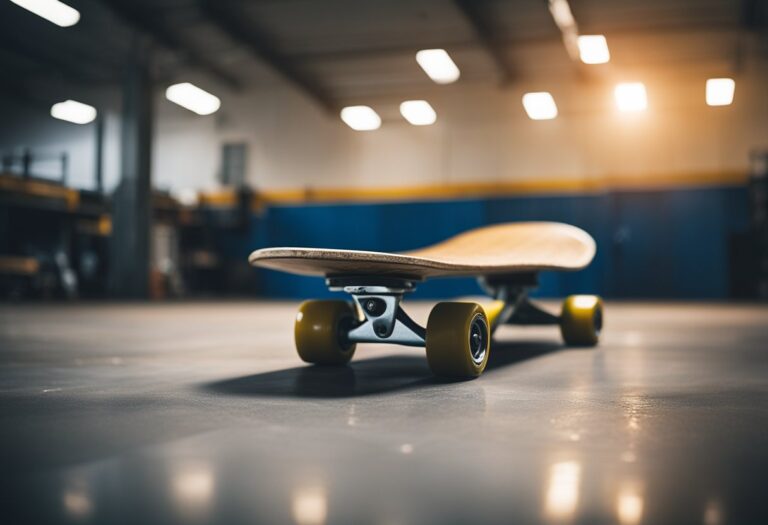Can I Practice Skateboarding by Myself? How To Attain Self Practices
Skateboarding is a thrilling sport that requires a lot of practice to master. While some people prefer to learn with the help of a coach or a friend, others may wonder if they can practice skateboarding by themselves. The answer is yes, but it requires discipline, patience, and a willingness to learn.

Getting started with skateboarding requires a few essential items, such as a skateboard, protective gear, and a flat, smooth surface to practice on. Once you have these basics, you can start working on your balance, foot positioning, and pushing off. Basic skateboarding techniques, such as turning and stopping, can also be practiced on your own.
Solo practice routines can help you improve your skills and build muscle memory. These routines can include practicing tricks, riding up and down ramps, and working on your balance. Progress tracking and goal setting can also help you stay motivated and focused on improving your skills. While practicing skateboarding by yourself can be challenging, it can also be very rewarding.
Key Takeaways
- Skateboarding can be practiced by oneself with discipline, patience, and a willingness to learn.
- Basic skateboarding techniques and solo practice routines can be done alone.
- Progress tracking and goal setting can help improve skills and stay motivated.
Getting Started with Skateboarding

Choosing the Right Skateboard
Before starting to practice skateboarding, it is important to choose the right skateboard. There are different types of skateboards available in the market, and each one is designed for a specific purpose. For beginners, it is recommended to choose a skateboard with a wider deck, as it provides more stability and balance. The length of the skateboard should be proportional to the rider’s height, and the wheels should be soft and large enough to provide a smooth ride.
Safety Gear Essentials
Skateboarding can be dangerous, and safety should always be a top priority. It is essential to wear the right safety gear to prevent injuries. The most important safety gear for skateboarding includes a helmet, elbow and knee pads, and wrist guards. The helmet should fit properly and be certified by a recognized safety organization. Elbow and knee pads should be made of durable materials and fit snugly. Wrist guards are also important to prevent wrist injuries.
Finding a Suitable Practice Area
Finding a suitable practice area is crucial for beginners. A smooth and flat surface is ideal for learning the basics of skateboarding. Skateparks can be intimidating for beginners, and it is recommended to start practicing in an empty parking lot or a quiet street. It is also important to choose a practice area that is free from obstacles and hazards, such as rocks, curbs, or uneven surfaces.
By following these tips, beginners can get started with skateboarding safely and confidently. Remember to always wear the right safety gear and practice in a suitable area. With practice and patience, anyone can learn to skateboard and enjoy the thrill of this exciting sport.
Basic Skateboarding Techniques

Standing on the Board
Before attempting any tricks, it’s essential to learn how to stand on the skateboard properly. Begin by placing your front foot over the front bolts of the board, with your toes hanging slightly off the edge. Next, place your back foot on the tail of the board, with your toes hanging off the edge. Keep your knees slightly bent and your weight centered over the board.
Pushing Off and Rolling
Once you feel comfortable standing on the board, it’s time to start moving. To push off, place your back foot on the ground and use it to propel yourself forward. As you gain speed, place your foot back on the tail of the board and keep rolling. Remember to keep your knees bent and your weight centered over the board.
Turning and Stopping
Turning and stopping are two crucial skills to master when learning to skateboard. To turn, shift your weight to the front or back of the board, depending on the direction you want to go. For example, if you want to turn left, shift your weight to your left foot. To stop, drag your back foot on the ground, which will slow you down and eventually bring you to a stop.
Overall, these basic skateboarding techniques are essential for any beginner to learn. With practice, you’ll be able to master these skills and move on to more advanced tricks.
Solo Practice Routines

Skateboarding is a sport that requires a lot of practice to master, and while it’s always fun to have friends around to skate with, it’s not always possible. Fortunately, there are plenty of solo practice routines that can help you improve your skills.
Balance and Stability Drills
One of the most important aspects of skateboarding is balance and stability. Without it, it’s impossible to perform even the most basic tricks. To improve your balance, try practicing on one foot, both while stationary and while moving. You can also try standing on the tail of your board and balancing for as long as possible, or practicing manuals (riding on your back wheels only) for longer and longer distances.
Ollies and Jumping Tricks
Ollies are the foundation of almost every skateboarding trick, so it’s important to get them down pat. To practice, try jumping over small objects like sticks or cracks in the pavement. As you get more comfortable, you can start jumping over larger and larger obstacles. You can also practice variations of the ollie, like the nollie (ollie while moving forward) or the fakie ollie (ollie while moving backwards).
Flips and Advanced Tricks
Once you’ve got the basics down, it’s time to start working on more advanced tricks. Flips, like kickflips and heelflips, are some of the most popular tricks in skateboarding. To practice, start by getting comfortable with the motion of the flip. You can do this by practicing the motion with your foot off the board, or by practicing stationary flips. Once you’re comfortable with the motion, start practicing while moving.
Other advanced tricks, like grinds and slides, require a lot of practice and skill. Start by practicing on small curbs or rails, and work your way up to larger obstacles as you get more comfortable. Remember to always wear proper safety gear, and never attempt a trick that you don’t feel comfortable with.
By practicing these solo routines, you’ll be able to improve your skills and become a better skater, even without a group of friends to skate with.
Progress Tracking and Goal Setting

Setting Realistic Goals
When practicing skateboarding alone, it is important to set realistic goals. This means that the goals should be achievable and not too difficult or too easy. Setting unrealistic goals can lead to frustration and discouragement, which can ultimately hinder progress.
To set realistic goals, one should consider their current skill level and set goals that are slightly more challenging but still attainable. For example, if a skater can perform basic tricks such as ollies and kickflips, they can set a goal to learn more advanced tricks such as heelflips or 360 flips.
It is also important to set specific goals with a clear timeline for achieving them. This can help the skater stay motivated and focused on their progress. Writing down the goals and tracking progress can also be helpful in staying accountable and monitoring improvement.
Monitoring Progress
Monitoring progress is essential for tracking improvement and identifying areas that need more attention. This can be done by keeping a record of the tricks and skills that have been mastered and those that still need work.
Using a skateboarding journal or app can be helpful in tracking progress and setting goals. The skater can record the tricks they have learned, the number of attempts it took to master each trick, and any notes on areas that need improvement.
Another way to monitor progress is by filming and reviewing skateboarding sessions. This can help the skater identify areas that need improvement and track progress over time. By reviewing the footage, the skater can analyze their technique and identify any mistakes or areas that need improvement.
Overall, setting realistic goals and monitoring progress are important for practicing skateboarding alone. By tracking progress and setting achievable goals, the skater can stay motivated and focused on improving their skills.
Overcoming Common Challenges

Dealing with Fear
One of the most common challenges faced by skateboarders is fear. Fear can be caused by many factors such as fear of getting hurt, fear of falling, or fear of failure. To overcome fear, it is important to start with the basics and gradually progress to more advanced tricks. This will help build confidence and reduce fear.
Skateboarders can also try visualization techniques to overcome fear. By visualizing themselves successfully completing a trick, they can reduce anxiety and build confidence. It is also important to wear protective gear such as helmets, knee pads, and elbow pads to reduce the risk of injury.
Staying Motivated
Another common challenge is staying motivated. Skateboarding can be a challenging and frustrating sport, especially when learning new tricks. To stay motivated, skateboarders can set realistic goals and track their progress. This can help them see their improvement over time and stay motivated to continue practicing.
Skateboarders can also try practicing with friends or joining a skateboarding community. This can provide a support system and help keep them motivated. It is also important to take breaks and not get too frustrated. Skateboarding should be fun, and taking a break can help skateboarders come back refreshed and ready to try again.
Community and Resources

Skateboarding can be a solitary activity, but it doesn’t have to be. There are many online communities and resources available to help skateboarders connect with each other, share tips and tricks, and find new places to skate.
Online Skateboarding Communities
Online skateboarding communities are a great way to connect with other skateboarders from around the world. They offer a platform to share videos, photos, and tips, as well as to ask questions and get advice. Some popular online skateboarding communities include:
- Reddit’s r/skateboarding: This subreddit has over 1 million members and is a great place to connect with other skateboarders, share videos, and ask for advice.
- Skateboard.com.au: This Australian-based forum is a great resource for skateboarders looking for information on local skate parks, events, and competitions.
- Skateboard-City.com: This forum has been around since 2003 and is a great resource for skateboarders looking for advice on everything from gear to tricks.
Skateboarding Apps and Tools
There are also a variety of skateboarding apps and tools available to help skateboarders improve their skills and find new places to skate. Some popular apps and tools include:
- SkateSpots: This app allows skateboarders to find and share skate spots around the world. Users can search for spots by location, rating, and type of spot.
- Go Skate: This app offers a variety of tools to help skateboarders improve their skills, including a trick tip library, a skatepark locator, and a video library.
- Skateboard Trick List: This app offers a comprehensive list of skateboard tricks, including step-by-step instructions and videos.
Overall, the skateboarding community is a welcoming and supportive group of individuals who are passionate about the sport. By connecting with other skateboarders and using the resources available, skateboarders can improve their skills and have more fun on their boards.
Frequently Asked Questions

What are the best practices for beginners learning to skateboard solo?
For beginners learning to skateboard solo, it’s important to start with the basics. This includes learning how to balance on the board, how to push off, and how to stop. It’s also important to practice in a safe and controlled environment, such as an empty parking lot or a skatepark with a beginner section.
Is it possible to teach yourself skateboarding at an older age?
Yes, it’s possible to teach yourself skateboarding at an older age. However, it’s important to take it slow and start with the basics. It may take longer to learn new tricks and skills, but with practice and patience, it’s achievable.
What safety measures should I take when practicing skateboarding alone?
When practicing skateboarding alone, it’s important to wear protective gear, such as a helmet, knee pads, and elbow pads. It’s also important to practice in a safe and controlled environment, away from traffic and other hazards.
How can I improve my skateboarding skills without a coach?
To improve skateboarding skills without a coach, it’s important to practice regularly and focus on the basics. This includes practicing balance, foot placement, and turning. Watching skateboarding videos and studying the techniques of other skaters can also be helpful.
Are there any effective solo drills for beginner skateboarders?
Yes, there are several effective solo drills for beginner skateboarders. These include practicing balancing on the board, practicing pushing off and stopping, and practicing turning. It’s important to start with the basics and gradually work up to more advanced drills and techniques.
What equipment do I need to start skateboarding by myself?
To start skateboarding by yourself, you’ll need a skateboard, protective gear (helmet, knee pads, elbow pads), and appropriate shoes (flat-soled sneakers or skate shoes). It’s also helpful to have access to a safe and controlled environment, such as an empty parking lot or a skatepark with a beginner section.
